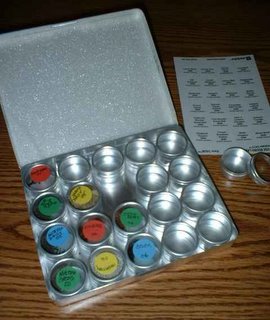
Maybe this should be called 'fool's spring'. Middle 50's, a thunderstorm, and the snow is melted, save for those patches clinging to the north side of a rock or wall.
So, what does one do after a thaw like this? In the past, I'd rush out to the garden, start working up the soil, and getting stuff ready for planting. In the past I'd also create globs of clay, lumps that would never work themselves out throughout the season, and ruts in the lawn.
I like to think I'm older and wiser now, so I just rush out and dig up the rest of my parsnips! Well, parsnips and one pretty sad looking carrot. Both are biennial plants, flowering and seeding the second year, and show no harm for spending the winter in the ground. (the carrot looks like it became a midwinter snack for a mouse or vole). All of these had already sprouted some green leaves this year, and if they were in a better location, I'd have left one or two to go to seed - parsnip seeds are difficult to store (or so the books tell me, I've never harvested my own).
Now, for all those folks who didn't grow up with grandmothers used to feeding 9 mouths on pennies, I'll share with you what parsnips are. Parsnips (the things that look like white carrots in the photo) are root crops in the same family as carrots, parsley, celery, and Queen Anne's Lace (the weed). For those that play Trivial Pursuit, the family is known as umbelliferae, due to the umbrella-like flowers. Freezing parsnips converts some of the starches to sugars, giving them a better flavor. Use parsnips boiled, roasted, or stir-fried. They are a good source of vitamin C and Potassium.
I like to add them chopped to soups and stews like carrots. They tend to be more earthy.
Wisconsin Garden Spring Chicken
2 bnls skinless chicken breast halves - browned, cut into cubes
1/2 cup chopped onion
1/2 cup chopped parsnips
1/2 cup chopped carrots
1/2 cup chopped celery
28 oz chicken broth OR equivalent water and bullion OR tomato vegetable juice drink
2 teaspoons Worcestershire sauce
Dash Hot pepper sauce
1/4 teaspoon peppercorns, smashed or not
2 bay leaves
1 teaspoon garlic powder
(optional) cooked noodles
Add everything to the pot except the noodles. Simmer until the vegetables are tender. Serve over noodles. If you prefer a more watery soup, add more broth or water while simmering.
--


